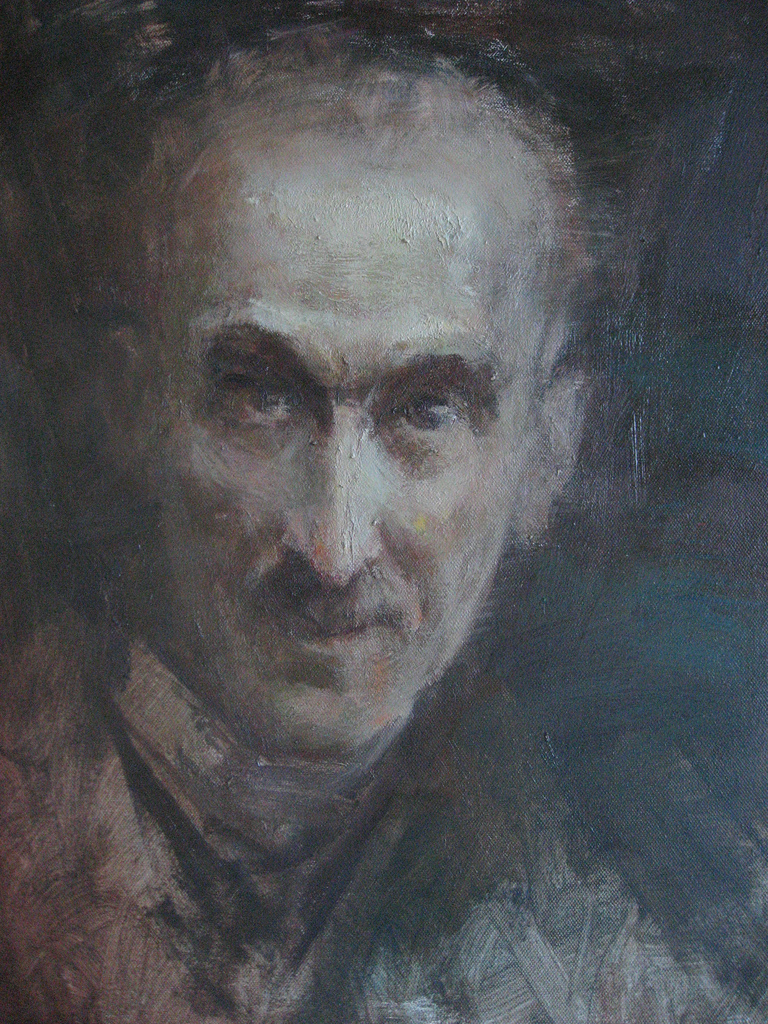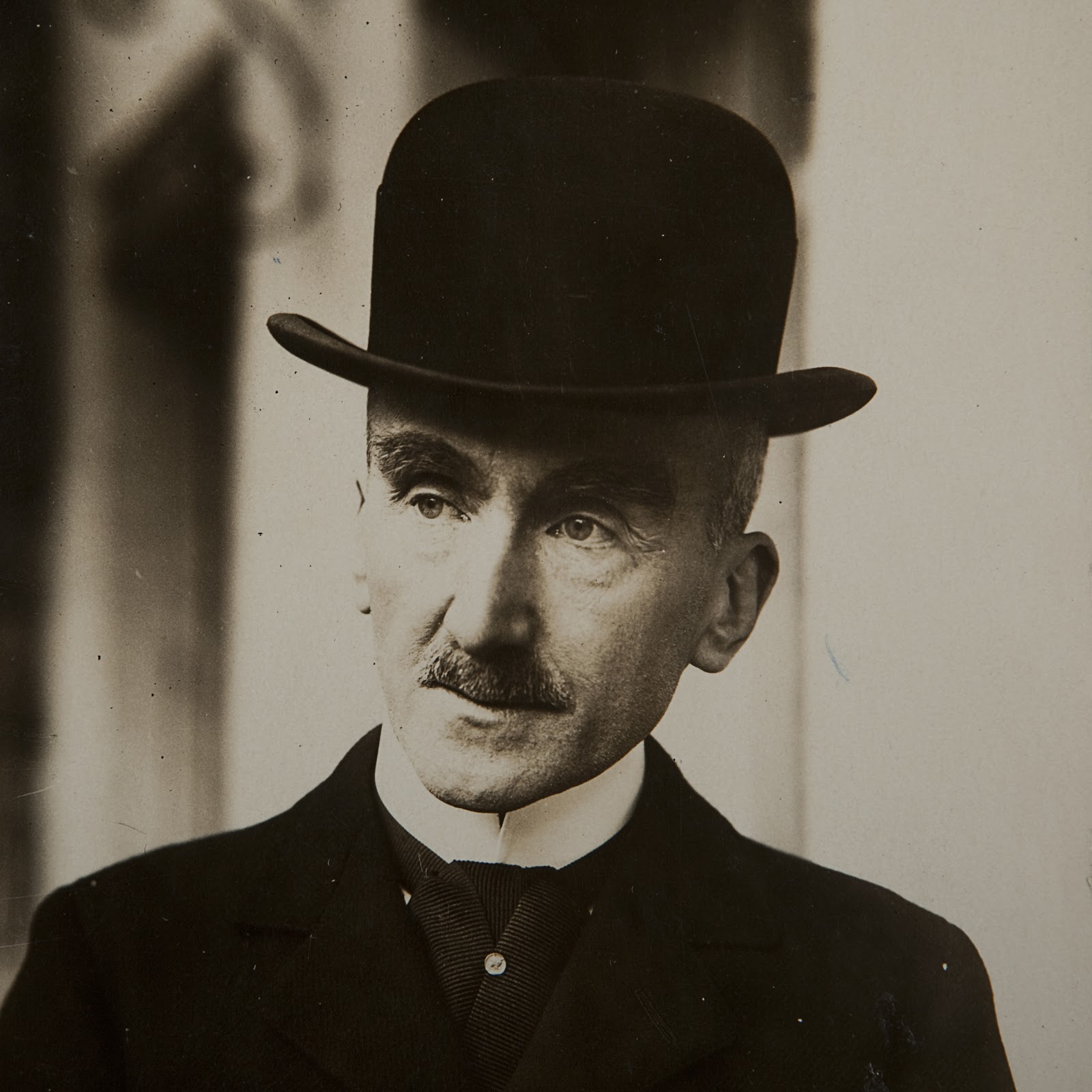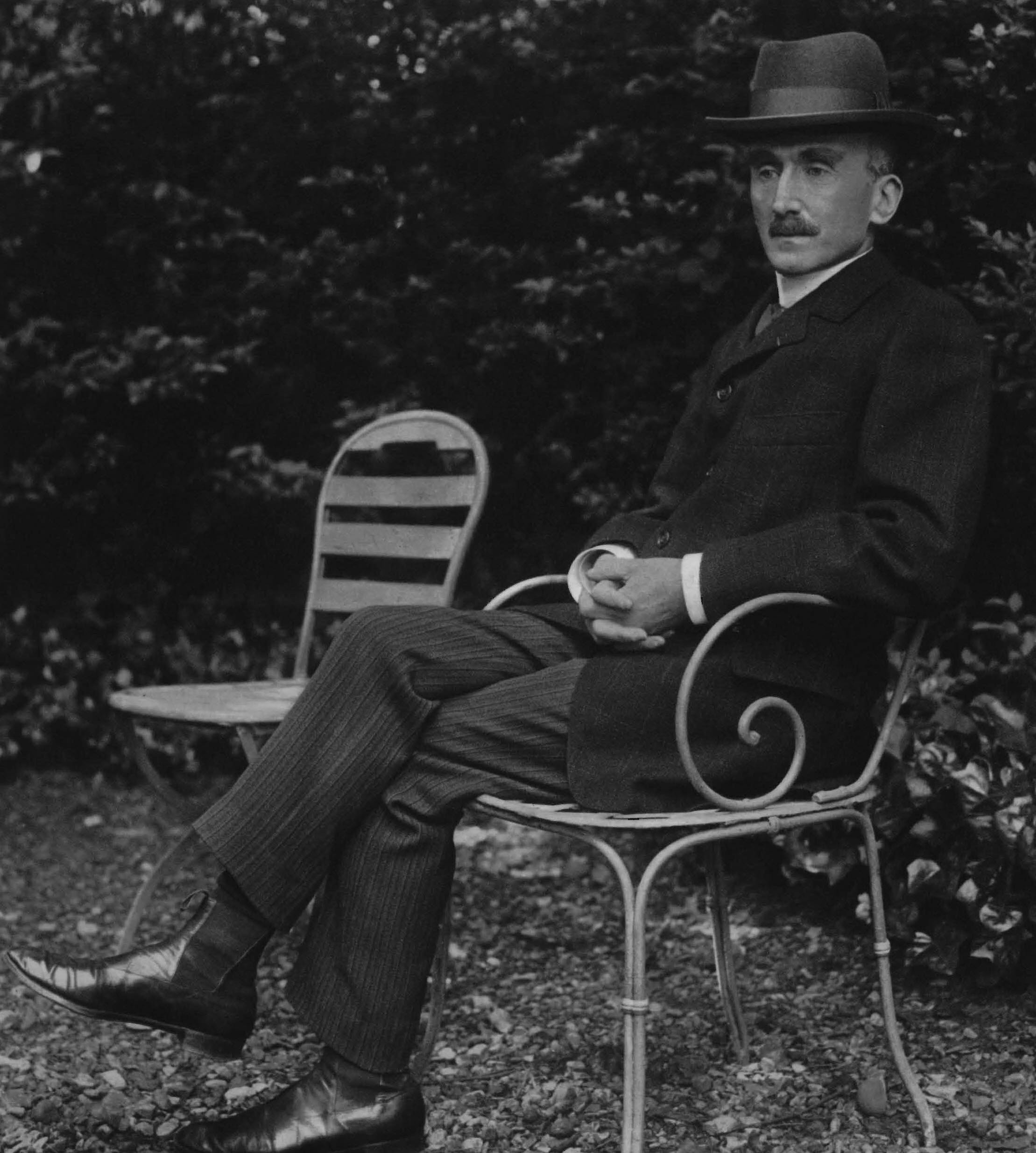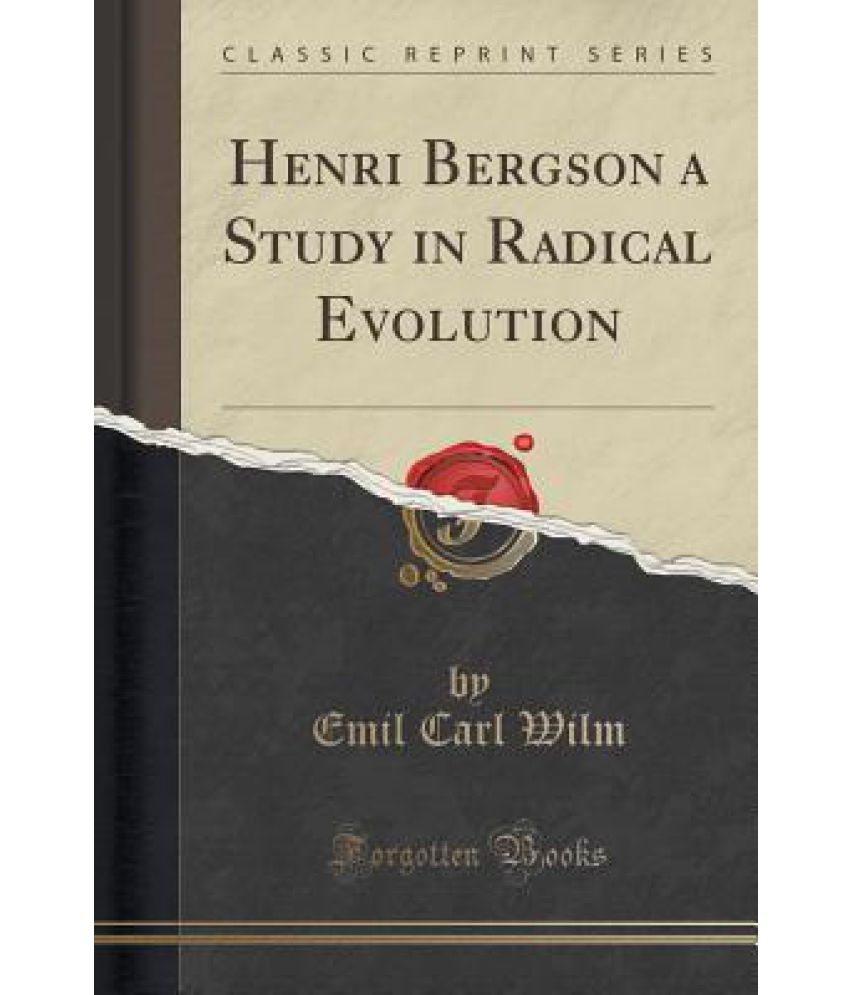
About Thomas Henry Huxley
March 29, 2017
About Samuel Alexander
March 30, 2017Evolutionary Naturalism
About Henri Bergson

H enri Bergson was the son of a Polish musician and composer, Michael Bergson, and of an English mother (née Kate Lewison). The family settled in Paris, where Henri attended the Lycée Condorcet and the Ecole Normale Supérieure. His main studies were mathematics, literature, and philosophy; and his academic record was brilliant. After becoming agrégé in 1881, Bergson began teaching philosophy at the Angers Lycée. He advanced steadily through a series of other posts, until in 1900 he was appointed professor at the College de France, where he eventually succeeded Gabriel Tarde in the chair of modern philosophy. By this time his books and lectures had given him an international reputation as the author of an original and impressive philosophical doctrine.
Bergson was elected to the Académie Françhysaise in 1914, was awarded the Nobel Prize for Literature in 1928, and received the Grand Cross of the Legion of Honor in 1930. After World War I, he devoted himself to the cause of the League of Nations and served as chairman of its Committee for Intellectual Cooperation. III health forced him to retire from academic life in 1921; he then lived in comparative seclusion with his wife (née Louise Neuburger) and daughter Jeanne. Bergson’s parents were Jewish, but he himself had no formal religious affiliation, although toward the end of his life he expressed a sympathy for Roman Catholicism.
Biography
Bergson was elected to the Académie Françhysaise in 1914, was awarded the Nobel Prize for Literature in 1928, and received the Grand Cross of the Legion of Honor in 1930. After World War I, he devoted himself to the cause of the League of Nations and served as chairman of its Committee for Intellectual Cooperation. III health forced him to retire from academic life in 1921; he then lived in comparative seclusion with his wife (née Louise Neuburger) and daughter Jeanne. Bergson’s parents were Jewish, but he himself had no formal religious affiliation, although toward the end of his life he expressed a sympathy for Roman Catholicism.
Bergson’s philosophy offers a new interpretation of four main ideas: time, freedom, memory, and evolution. These ideas are construed so as to produce a doctrine that is opposed to materialism, as well as to mechanistic and deterministic theories of living things. The doctrine strongly emphasizes the phenomenon of change or process, which continually creates unpredictable novelties in cosmic history. The doctrine also emphasizes the importance of direct, conscious experience as the source of man’s most reliable knowledge.
In his first book, Essai sur les;données immédiatesde la conscience (Time and Free Will), Bergson drew a distinction between two kinds of time. There is the time that occurs in the theories of the natural sciences, and there is the time that we experience directly. Scientific time is a mathematical conception, symbolized geometrically by a line or algebraically by the letter t, and measured by clocks and chronometers. Because these measuring instruments are spatial bodies, scientific time is represented as an extended, homogeneous medium composed of standard units (seconds, hours, years, and so forth). Most of man’spractical life in society is guided by reference to such units. But time thus represented neither “flows” nor “acts”; it is wholly passive. When we turn to our direct experience, however, we find nothing like scientific time. What we find, Bergson contended, is a flowing, irreversible succession of phenomena which melt into one another to form an indivisible process. This process is not homogeneous, but heterogeneous. It is concrete, not abstract. In short, it is “lived time” (temps vécu) or “real duration” (durée réelle), something immediately experienced as active and on going. If we try to represent it by a spatial image such as a line, we will only generate abstract mathematical time, which is a fiction. The mistake of mechanistic modes of thought is to regard this fiction as a reality.
The recognition of real duration provides a basis, Bergson held, for vindicating human freedom and disposing of the bogey of determinism. A determinist contends that freedom of choice is illusory. A man may feel that he is free to choose, but theoretical considerations show that he never is. To support this contention, a determinist may depict the case in which a man confronts an ostensible choice as a situation similar to arriving at a point on a line where branching occurs, and then taking one of the branches. The determinist asserts that in fact the branch taken could not not have been taken and, indeed, that the choice made was fully predictable before hand, given complete knowledge of the antecedent states of mind of the agent.
This argument has a spurious plausibility, according to Bergson, because it represents the case of choice by a spatial image. The image may serve to symbolize a choice already made, but it is totally inadequate to symbolize a choice in the making: in acting, we do not move along a linear path through time. Deliberating about a course of action is not like being at a point in space where we oscillate between paths laid out before us. Deliberation and choice are temporal, not spatial, acts. Moreover, the determinist makes the mistake of supposing that the way in which the agent acts is determined by the totality of antecedent states of mind, each atomically independent of the rest. This conception of mental life as made up of basic units was the misconception promulgated by association istic psychology. It invalidates all the traditional arguments for determinism.
Freedom of choice, Bergson held, is fully certified by direct experience. A man knows that he is free as he acts. However, one qualification must be added. Strictly speaking, a man is free only when his act springs spontaneously from his total personality as it has evolved up to the moment of action. If this spontaneity is absent, his action will be stereotyped and mechanical. Hence, free acts are far from being universal. Most people behave like automata most of the time. But the point is that they need not do so, for freedom is always attainable.
Bergson’s second book, Matière et mémoire, advocates a dualism of body and mind, of the material and the spiritual. Each of us is alleged to know his own body in two ways: from without, as an object among other objects, and from within, as a center of action. Likewise, each of us knows his own conscious processes directly. How are the body and mind—i.e., brain activity and mental activity related? The answer lies in a proper understanding of memory.
Living organisms, unlike nonliving things, retain their past in the present. This phenomenon is manifested, Bergson affirmed, in two kinds of memory. One kind consists of bodily habits fixed in the organism and designed to ensure its adaptation to the contemporary world. The other kind of memory, which man alone Possesses, records in the form of images each event of his daily life as it takes place. This is “pure memory:” which is wholly spiritual. It is quite independent of the brain, whose structure resembles that of a telephone exchange and which therefore has no facilities for storing memory traces.
How is pure memory related to the brain? Bergson’s answer depends on the assumption that each person’s memory retains the whole of his past experience. If this is so, something must prevent all of one’s memories from crowding into consciousness at every moment. The brain is the mechanism that performs this function. It is a device evolved to facilitate action by ensuring that only what is relevant to a particular occasion of action will be recalled. Hence, it acts as a filter which excludes the vast majority of memories at each instant. It is a device to promote forgetting, not remembering.
The relation between body and mind is, then, to he understood temporally. It is not to be envisaged as a spatial or quasi-spatial connection between two entities. On an occasion of action, body and mind (including memory) converge in time. A typical case is an act of perception. Traditional philosophers have thought of perception as being like a photographic process which provides a passive, cognitive reflection of the world. But this is a mistaken view. Perception is an adaptive response to the world in which the body contributes sense receptors to register the influences of environing objects, and the mind contributes relevant memory images to give a meaningful form to what is perceived. The aim is to put the organism in a condition in which it can act successfully. Body and mind are thus united in real duration, for perception is an event in the present, which is not a geometrical point or “knife edge” separating past from future, but a continuous flowing. Perceptual acts in which body and mind are fused are intrinsically temporal and practical.
In his next work, Introduction à la métaphysique, Bergson modified his position by affirming that sometimes “pure perception,” detached from memory and action, can occur. This process is also called “intuition” and is contrasted with conceptual thought, the product of the intellect. Both processes arose in human evolution, intuition being derived from instinct and conceptual thought being derived from man’s social existence, his tool-making capacity, and his power of speech. Because his inherently limited intellect is the human animal’s distinctive instrument which he employs in his interactions with the world, conceptual thought has certain limitations. It has an inherent tendency to use spatial notions, to analyze things mechanistically into ultimate units, and to interpret motion and change in static terms. Like a motion-picture camera, it translates everything into a series of discrete “frames.” Intuition, on the other hand, is a type of consciousness which achieves a direct participation in, or an identification with, what is intuited. By means of it “one is transported into the interior of an object in order to coincide with what is unique and consequently in expressible about it.”
In the case of ourselves, intuition is immersion in the flow of consciousness, a grasping of pure becoming and real duration. Unlike the intellect-which remains outside what it knows, requires symbols, and produces knowledge that is relative—intuition enters into what it knows, dispenses with symbols, and produces knowledge that is absolute.
The natural sciences were for Bergson a typical achievement of the intellect. Hence, they inevitably falsify time, motion, and change by interpreting these items in terms of static concepts. The sciences are equipped to deal with matter, but not with real becoming. Hence, there is need of a discipline to supplement them, if a full understanding of the universe is to be attained. Such a discipline, Bergson proposed, is metaphysics, not in the classical sense of rational speculation or system building, but redefined as a “true empiricism” that explores real becoming by participating directly in it. Thus, by adopting the method of intuition, metaphysics can provide a supplement to the sciences by giving a true account of duration, of becoming, and even of evolution.
This last topic was dealt with by Bergson in his most famous book, L’évolution créatrice (Creative Evolution). He accepted the historical fact of the evolution of living things on the earth, but rejected all mechanistic of materialistic explanations of the evolutionary process. In place of the theories of Darwin, Lamarck, and Spencer, he advanced a doctrine which owes much to the tradition of European vitalism and also draws inspiration from Plotinus. The result was a theory of cosmic evolution that goes far beyond the domain of biology.
Bergson did accept one aspect of Lamarck’s doctrine. “the power of varying by use or disuse” certain bodily organs, and the transmission of such acquired variations to descendants. He may have derived this notion from his early study of Herbert Spencer, rather than from the study of Lamarck himself. However, he does not link the notion with a doctrine of “racial memory” (as did, for example, Samuel Butler). Bergson hints that the Lamarckian idea of “effort” has to be understood not in an individualistic sense, but in “a deeper sense” as a manifestation of the élanvital.
Bergson argued against the Darwinian doctrine that the cause of evolution was natural selection acting on random variations. This doctrine fails to give a satisfactory explanation of the evolution of complex organs and functions, such as the eye of vertebrates, for it obliges us to suppose that at each stage all the parts of an animal and of its organs vary contemporaneously, since integral functioning has to be preserved to ensure survival. But it is utterly implausible to suppose that such coadapted variations could have been random. Some agency must have been at work to maintain continuity of functioning through successive alterations of form.
Another fact that points in the same direction is the evolution of complex organisms from relatively simple ones. The earliest living things were minute, unicellular entities well adapted to their environment. Why did the evolutionary process not stop at this stage? Why did life continue to complicate itself “more and more dangerously”? Random variations and selection pressures cannot provide a satisfactory explanation. Something must have driven life on to higher and higher levels of organization, despite the risks involved. Neither Spencer, with his appeal to mechanistic notions, nor Lamarck, with his appeal to the “effort” exerted by individual organisms, can account for the great diversity and complexity which evolution has created.
The clue to this problem, Bergson affirmed, is to be found not in biology, but in metaphysics. Human beings, with their capacity for intuition, are typical constituents of the universe, and hence the forces that work in them may be supposed to work in all things. Intuition not only discloses pure duration and becoming in our experience, but also gives us a consciousness of a vital impulse (élan vital) within us. We are thus led to the idea of “un élan original de la vie” which pervades the whole evolutionary process and accounts for its dominant features. Accordingly, the history of life is to be understood as a process of creative evolution which has resulted from this primordial impulse.
Bergson spoke of the vital impulse as a “current of consciousness” that has penetrated matter, produced living organisms, and made possible an ever increasing freedom of action. Yet the impulse is not striving to attain a final goal. Bergson was as opposed to radical finalism as he was to mechanism. Both doctrines disregard the creativity by which unpredictable novelties have periodically “leaped into existence.” One of these novelties is man, for his appearance was in no sense designed or prefigured. Terrestrial evolution might have produced some other being “of the same essence,” Such beings doubtless have arisen elsewhere, for the vital impulse must be supposed to animate countless planets in the universe. Creative evolution is thus cosmic in its scope.
Bergson’s interest in science was shown not only by his discussion of biology but also by his discussion of physics. This subject is treated in Durée et simullanéité, which deals with the view of time set forth in Einstein’s theory of relativity. Here, as in the case of evolution, Bergson sought to demonstrate how philosophy can supplement science by providing a more adequate account of phenomena. Einstein’s theory has, of course, a precisely defined physical sense and stands in no need of support from metaphysics. But some persons have sought to derive from the theory certain “paradoxes” that have their source in the notion of multiple times which flow more rapidly or less rapidly, depending on the motion of the reference systems with which they are associated. Bergson contended that these paradoxes arise because of a philosophical misconception. They rest on an assumption that all of the times are real when the observers in the various systems disagree in their measurements. But from a philosophical standpoint only experienced or “lived” time (temps vécu) is real. Hence, the paradoxes can be avoided by considering just one observer and his time as real at each stage of the calculation. For that observer the times of all other reference systems are mathematical fictions, not realities. A similar treatment can be given to simultaneity. It is even possible in the light of this to reinstate the idea of universal time (I’idée d’une duréede l’univers) as a philosophical basis for physics.
The religious element in Bergson’s thought became more pronounced in his later works. Creative Evolution contains a reference to the vital impulse as a “supraconsciousness” to which the name “God” might be applied. This was a use of the term quite alien to traditional Christian theology. For if God is the vital impulse, He is pure activity, limited by the material world through which He is struggling to manifest Himself and, hence, is evolving rather than complete and perfect. In Bergson’s final book, Les deux sources de la morale et de la religion, this conception is qualified so that it moves closer to the Christian position. God is now affirmed to be love and the object of love. A divine purpose in evolution is also affirmed, for evolution is nothing less than God’s “undertaking to create creators, that He may have, besides Himself, beings worthy of His love.”
The discovery of this purpose and of the reality of God cannot be made by the intellect. It can be made only by the special sort of intuition that is the mystical experience. The vital impulse, Bergson declared, is “communicated in its entirety” to certain exceptional persons. These are the mystics who attain partial union with the creative effort that “is of God, if it is not God Himself.” But the mystical experience does not lead to passive withdrawal from the world; it leads to intense activity. The true mystics are impelled to help the divine purpose to advance by helping mankind to advance beyond its present state.
An important step in this advance is the replacing of a “closed” society with an “open” one. Bergson’s analysis here is influenced by that of the French sociological school of Émile Durkheim. A closed society is one dominated by what is routine and mechanical. It is resistant to change, conservative and authoritarian. Its morality is static and absolutistic, and its religion is ritualistic and dogmatic. An open society is progressive, diversified, experimental, and continually growing. Its morality is flexible and spontaneous. Religion in this society will dispense with stereotyped dogmas formulated by the intellect. These dogmas will be replaced by the intuition and illumination now achieved by the mystics. Men in the open society will be free, integral, creative, and able to reflect in their lives the divine élan that is the basic reality in the universe.
Bergson’s philosophy represents an impressive statement of the antimechanist position. His use of biological and psychological material to support his contentions, his capacity to invent striking metaphors, and above all his fluent, persuasive style gave his philosophy wide appeal. Philosophers such as William James, dramatists such as G. B. Shaw, and littérateurs such as Proust were all influenced by Bergsonian doctrines. Yet the absence of precise definition and of rigorous argument in his books leaves many doctrines obscure. It is far from clear, for example, how his theory of knowledge, which is a form of idealism, can be made compatible with his Parabiological theory, which is a form or evolutionary realism. Intuition is said to disclose pure becoming, real duration, and the vital impulse. Yet the differences, if any, between these items ate not clearly specified. Sometimes matter and spirit are treated as quite distinct from one another, and sometimes as the “inverse of one another, matter being spirit that has become “devitalized” and uniform. These obscurities are perhaps to be expected in the work of a philosopher for whom intuition is superior to conceptual thought. Bergson displayed his greatest originality when he undertook to describe direct experience and the temporal dimension of life.
BIBLIOGRAPHY
1. Original Works. Bergson’s works include Écrits et paroles, R. M. Mossé-Bastide, ed. (I, Paris, 1957; II and III, Paris, 1959); and Oeuvres, Édition du centenaire, annotated by André Robinet, intro. by Henri Gouhier (Paris, 1959). This edition contains the following works: Essai sur les données immédiates de la conscience (Paris, 1889); Matière et mémoire (Paris, 1896); Le rire (Paris, 1900);Introduction à la metaphysique (Paris, 1903); L’évolution créatrice (Paris, 1907); L’ ënergie spirituelle (Paris, 1919); Les deux sources de la morale et de la religion (Paris, 1932); La pensée et la mouvant (Paris, 1934). The only major work omitted is Durée et simultanéité (Paris, 1922; 3rd ed., 1926), for the reasons given by E. Le Roy in “Lettre-préface” to Écrits et paroles, I, vii-viii.
English translations of Bergson’s writings include Laughter, An Essay on the Meaning of the Comic, trans. C. Brereton and F, Rothwell (New York, 1910); Time and Free Will: An Essay on the Immediate Data of Consciousness, trans. F. L. Podgson (New York, 1910); Creative Evolution, trans. A. Mitchell (New York, 1911); Matter and Memory, trans. N. M. Paul and W. S. Palmer (New York, 1911); Introduction to Metaphysics, trans. T. E. Hulme (New York, 1914, 1949); Mind-Energy, trans. H. W. Carr (New York, 1920); The Two Sources of Morality and Religion, trans. R. A. Audra and C. Brereton (New York, 1935); and The Creative Mind, trans. M. L. Andison (New York, 1946).
II. Secondary Literature. Works on Bergson and his philosophy include H. W. Carr. Henri Bergson, the Philosophy of Change (London, 1912; new ed., rev., 1919); J. Chevalier, Henri Bergson (New York, 1928); J. Delhomme, Vie et conscience de la vie: Essai sur Bergson (Paris, 1954); M. V. Jankélévitch, Henri Bergson (Paris, 1959), a centenary completion of a work published in 1931 Which undertakes to refuse the view that Bergson’s philosophy is dualistic and to relate it to the contemporary movement of European phenomenology: A. D. Lindsay, The Philosophy of Bergson (London, 1911); A. O. Love joy, The Reason, the Understanding and Time (Baltimore, 1961), contains a valuable discussion of Bergson’s ideas in relation to post-Kantian thought in Germany; J. Maritain, La philosophie bergsonienne (Paris, 1930), trans. M. L. and G. Andison as Bergsonian Philosophy and Thomism (New York, 1955), a highly polemical work by an ex-Bergsonian turned Thomist; R. M. Mossé-Bastide, Bergson éducateur (Paris, 1955), a full and accurate account of Bergson’s career, with a massive bibliography of primary and secondary sources; B. A. Sharfstein, Roots of Bergson’s Philosophy (New York, 1943); and Les études bergsoniennes (Paris, 1948–1966), studies published at intervals under the editorship of various Bergsonian scholars, of which Vol. II (1949) contains the text of Bergson’s doctoral thesis (1889), translated into French from Latin as L’idée de lieu chez Aristote.












